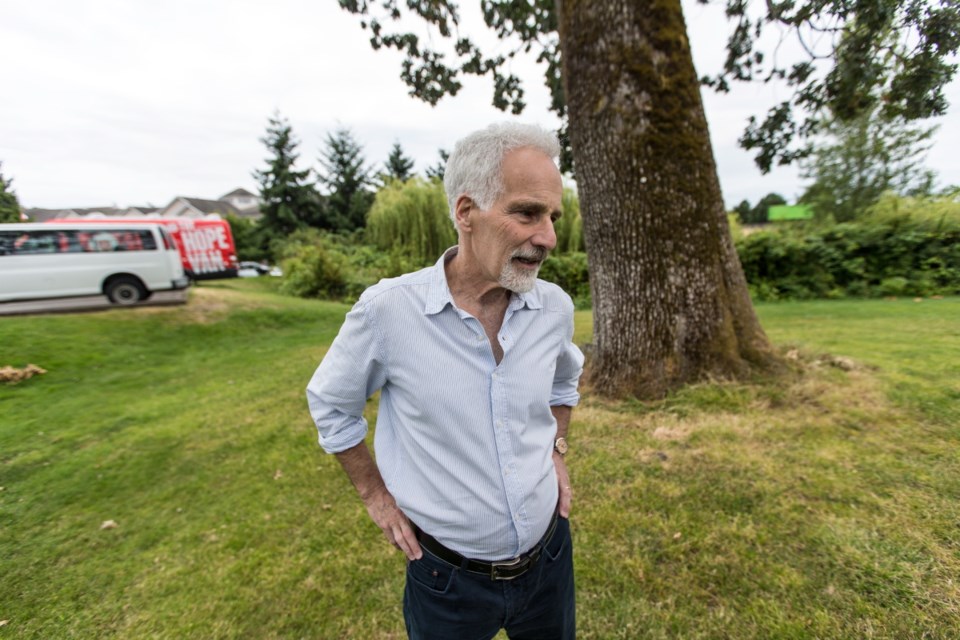Marc Lewis is a neuroscientist who believes the opioid crisis is made worse by a medical profession that views addiction as a chronic brain disease.
“I think it’s harmful. It completely disempowers addicts and takes away the likelihood that they will fix themselves,” said Lewis, who spoke Friday at a forum on addiction organized by the Salvation Army Addictions and Rehabilitation Centre. This was his first visit to Victoria.
He views addiction as a developmental and psychological issue that “develops like other mental and emotional behavioral habits,” starting as early as childhood and exacerbated by traumatic experiences.
Lewis is a prolific writer, speaker and author on developmental psychology and addiction. He is from Toronto but lives in the Netherlands, where he recently retired from teaching at a university. He is on tour supporting his most-recent book, The Biology of Desire: Why Addiction is Not a Disease.
Lewis is a former addict — “I use that word because I was one,” he said — who started using LSD and opiates as a teenager in the 1960s after a traumatic few years at boarding school.
He said the opioid crisis has not been helped by society blaming those with addictions, pharmaceutical companies or doctors for prescription-drug use, or seeing it as a crime issue.
Lewis said viewing addiction as solely a medical issue or chronic brain disease might open doors to more life-saving resources such as opiate-replacement therapy, but is wrongheaded when it comes to long-term recovery.
“It calls for medical treatment as the primary intervention. The addict becomes a patient and hands over control,” he said, adding that viewing addiction as a chronic disease becomes a self-fulfilling prophecy, and increases chances of relapse.
He said medical doctors argue addiction is a disease because it changes the brain, but he counters that the brain is always changing and can be re-habituated.
“We need to ask: How do we help addicts feel more empowered?” he said, noting cognitive behavioral therapies have been successful, as well as meditation and narrative therapies.
“We have look at how the internal dialogue can be modified, how a person can look at their past, present and future self and imagine something different,” he said.
“Can we find a more sympathetic dialogue about who we are and what we want to become? Self-compassion is a real thing. Once you understand where you’ve come from, where you’ve been and how you got there, you can begin to forgive yourself and move on.”
Lewis said society also needs to play a greater role in preventing addictive behaviours from early childhood through social supports such as housing, health and education.
“Look at what opioids fundamentally are. Their natural function in our bodies is to reduce stress, anxiety and pain. So why do we need to reduce stress?” he asked.
“There are a lot of ways to screw people up. Deprive them of hope, safety and security so they do drugs.”
Kyle Deschamps, who attended the forum, said he was familiar with Lewis’s approach through several recovery programs and responded to his message of self-empowerment.
“I’ve done a lot of programs. Ten years in prison and I’m still struggling with addiction,” said Deschamps, 39. “To say you’re powerless in your addiction doesn’t make any sense. It’s destructive.”
Deschamps said practising meditation has helped him in recovery and in maintaining a sense of self-awareness. He had his first relapse after the birth of his daughter, which he said shocked him.
“I have no idea why it happened, what the trigger was … I’m confounded,” he said. “But I guess you kick the dust off and try again.”
A public health emergency was declared in April 2016 in response to an increase in overdose deaths. That prompted wide distribution of naloxone, which reverses the effects of opioids, and establishment of dozens of overdose-prevention sites.
More than 640 people died of illicit-drug overdoses in B.C. in the first five months of 2017, including 41 in Victoria. The majority of overdose-death victims are men between the ages of 30 and 39 who use drugs indoors.



